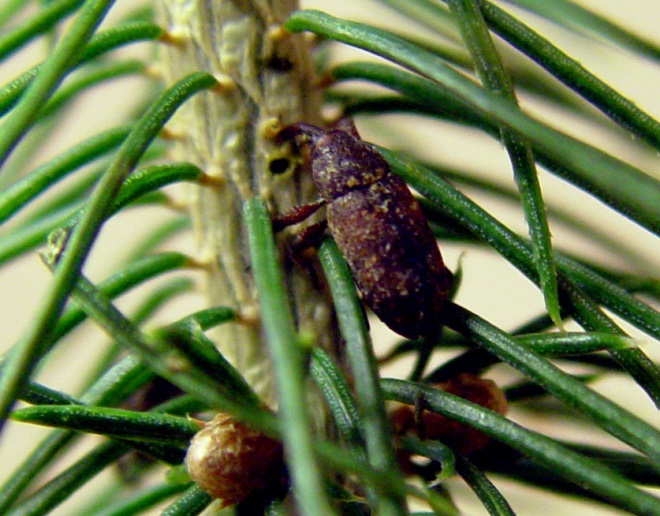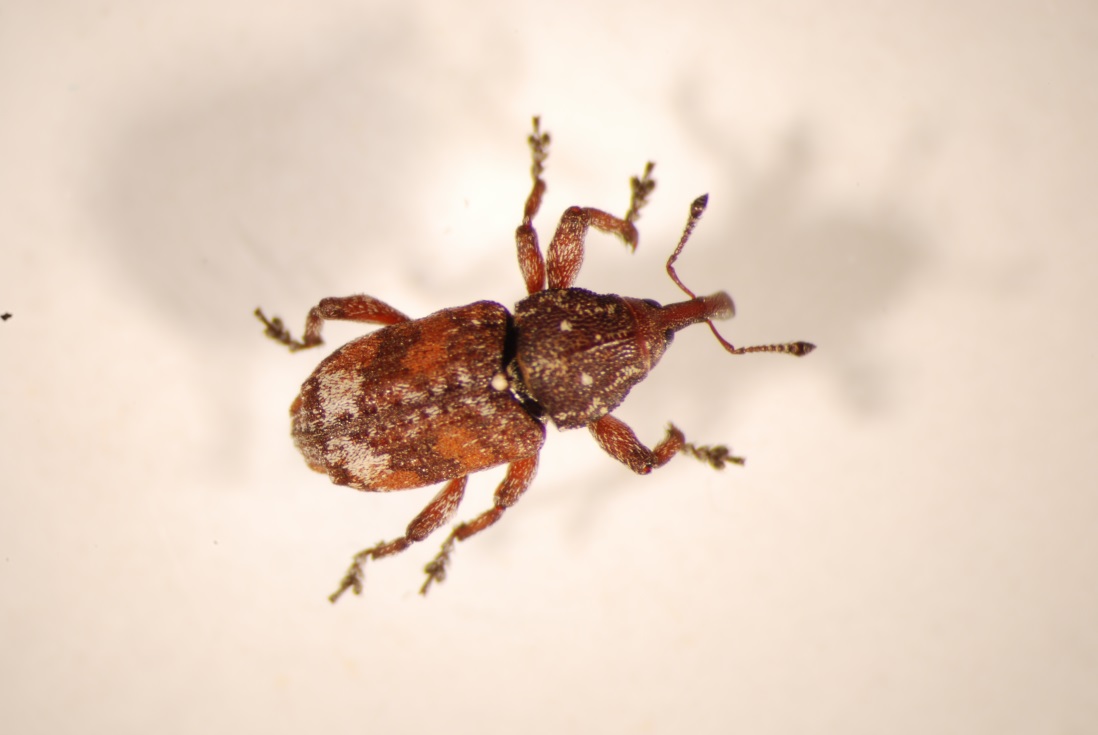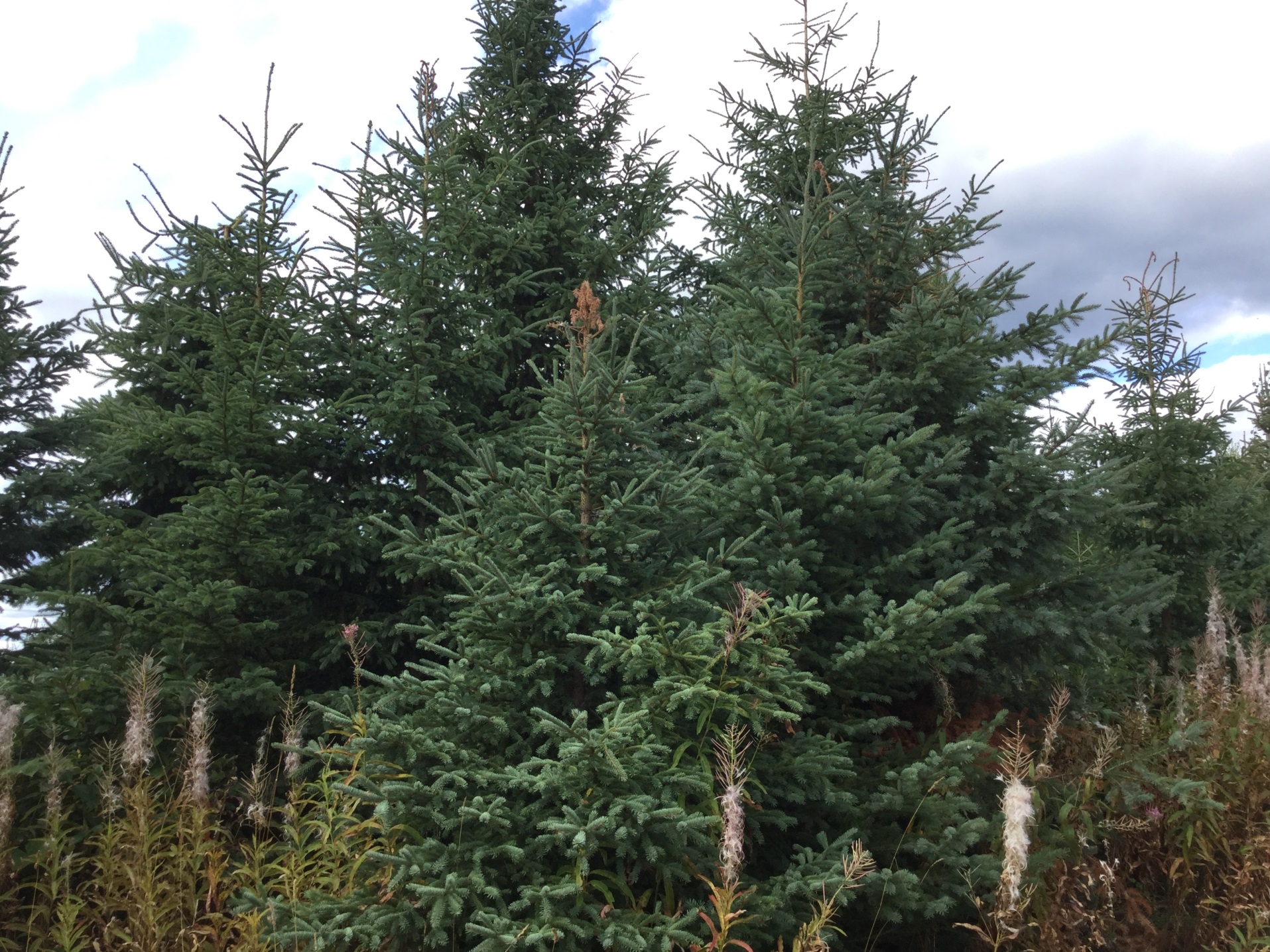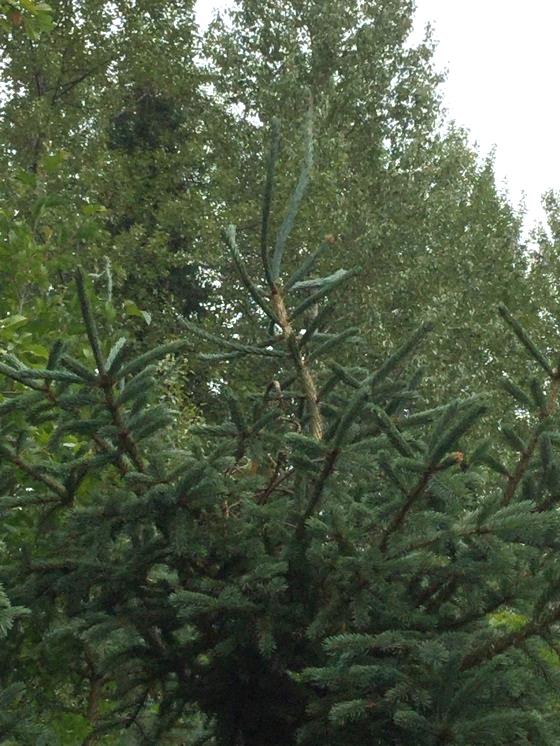White Pine Weevil
Pissodes strobi
Adult white pine weevils are brown with white spots; they occur in spruce and pine ecosystems throughout Canada.
On this page
Description
White pine weevil or spruce leader weevil is a weevil in the family Curculionidae (weevils or snout beetles) in the order Coleoptera. This weevil damages the tree leader (what's grown in the last two years).
Host tree species
White pine weevil attacks several commercially important conifer hosts. The most important hosts in British Columbia are sitka spruce, Engelmann spruce and white spruce. Other hosts in North America include eastern white pine (Pinus strobus), Jack pine, and Norway spruce (Picea abies).
Life cycle
Adult weevils make short flights early in the spring to disperse after overwintering.
Adults females lay their eggs at the tip of the previous year’s leader in spring. The eggs are laid inside the female's feeding hole and then packed in place with fecal matter. The larvae hatch and feed downwards along the leader. The feeding kills the leader and it curls into a characteristic “shepherd’s crook” form.
The larvae pupate in chip cocoons at the base of the leader and new adults emerge in August or September of the same year. If weather conditions are unfavorable, then larvae or pupae may overwinter and emerge in the following spring. The life cycle is completed within one year.
Once a suitable host tree is identified, successful attack depends both on weevil numbers and host suitability. Weevil larvae must be present in sufficient numbers overcome the host tree’s defense effort.
Damage symptoms
Weevil damage can cause a forked or dwarfed tree form. Repeated attacks can cause severe stem deformation over time. Thus, weevil attack causes growth losses, a reduction in wood quality, a decrease in lumber recovery, and potentially tree death.
Management
Weevil outbreaks are facilitated by monocultures of host trees on warm, highly productive sites. Management recommendations for controlling weevil outbreak include:
- Dense replanting of host trees
- Planting non-host species
- Planting a species mixture that will provide deciduous overstory (shading) for the developing host trees
Although it is unlikely that these methods will completely eliminate the weevil from commercially important plantations, the impact of weevil damage may be reduced. Tree breeding programs initiated by the British Columbia Ministry of Forests, Lands, Natural Resource Operations, and Rural Development have focused on the identification of resistance traits in Sitka spruce. Planting resistant host trees in highly susceptible areas can also reduce damage.
Identification images
Weevil on a pine leeder

Close up of a adult

Damage to spruce


A spruce leader growing around a dead top after attack by white pine weevil
